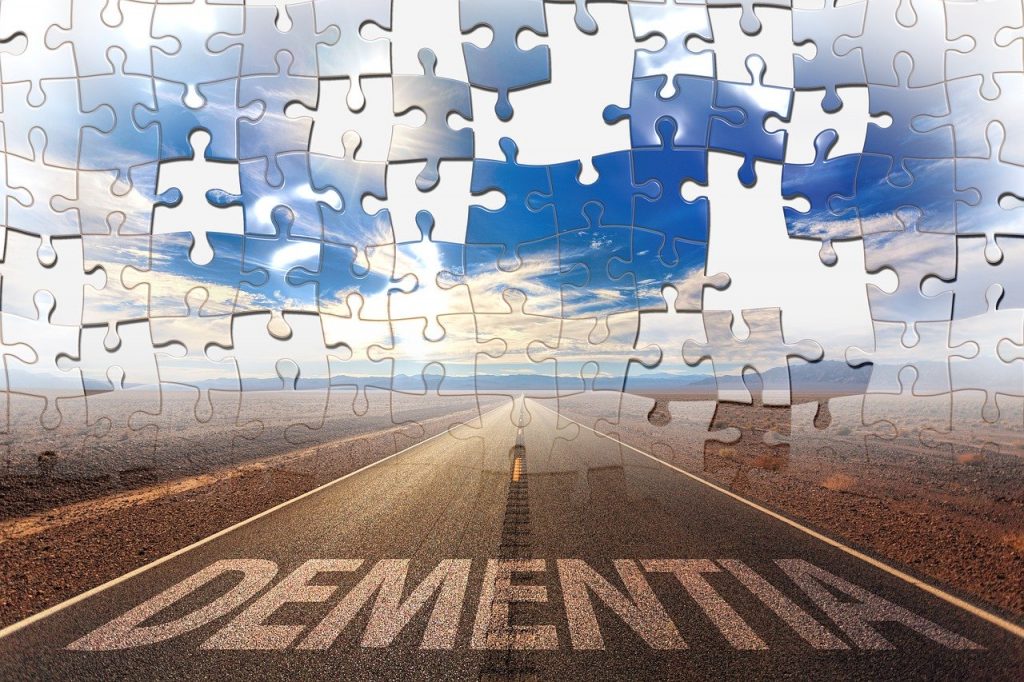You probably remember being a kid and hearing your parents or others say things like grandpa or grandma is senile. There was not as much information about dementia then nor much treatment. The word senile is no longer used but even in 2020 we have made little progress in terms of treatment for dementia.
However, there is hope. As a physical therapist who works closely with patients who have various levels of dementia, I will be writing a dementia series that reviews the different types of dementia, treatments, and most importantly – prevention.
What is dementia?
 Dementia robs a person, their family and friends of their very humanity. Their memories and capacity for thought diminish with time. At some point they will no longer know their family, friends, and ultimately, they won’t even know themselves.
Dementia robs a person, their family and friends of their very humanity. Their memories and capacity for thought diminish with time. At some point they will no longer know their family, friends, and ultimately, they won’t even know themselves.
I see this story unfold every day as I watch those around me start the dementia decline. I see people whisper behind their backs, and I also see families in denial. I see people go from driving and living independently to ultimately being wheelchair bound in a nursing home, unable to even feed themselves. Eventually, even the ability to communicate is gone. At that point, family usually stop coming by and the person must rely on strangers to care of them.
A technical definition
 The Alzheimer’s Association defines Dementia as “an overall term for all diseases and conditions characterized by a decline in memory, language, problem-solving and other thinking skills that affect a person’s ability to perform everyday activities”. Memory loss is just one example. Alzheimer’s dementia is the most common. Globally by 2050, 160 million people will develop Alzheimer’s.
The Alzheimer’s Association defines Dementia as “an overall term for all diseases and conditions characterized by a decline in memory, language, problem-solving and other thinking skills that affect a person’s ability to perform everyday activities”. Memory loss is just one example. Alzheimer’s dementia is the most common. Globally by 2050, 160 million people will develop Alzheimer’s.
Here are some signs and symptoms of dementia:
- Memory loss
- Problems speaking or communicating (word finding problems or using the wrong words)
- Problems focusing
- Impairments in judgement
- Struggles completing tasks
- Has difficulty comprehending what is seen
- Losing items
- Difficulty learning new material
The major categories of dementia
- Alzheimer’s Dementia
- Vascular Dementia
- Lewy Body Dementia
- Mixed Dementia
- Frontotemporal Dementia
How does one get diagnosed with dementia?
 Unfortunately, no single test can diagnose dementia. Diagnosis usually involves several tests combined to diagnose. There is a genetic test for APOE. Apolipoprotein E (APOE) is a protein involved in the metabolism of fats in the body. Getting tested for this can help identify risk for development of Alzheimer’s Dementia.
Unfortunately, no single test can diagnose dementia. Diagnosis usually involves several tests combined to diagnose. There is a genetic test for APOE. Apolipoprotein E (APOE) is a protein involved in the metabolism of fats in the body. Getting tested for this can help identify risk for development of Alzheimer’s Dementia.
A cognitive test is first
For most, your physician will begin with a cognitive test. They will usually use a test called a MOCA (Montreal Cognitive Assessment). This test will evaluate your memory, language, visual perception, problem-solving etc. You may also require a brain scan. Your physician may order a CT, MRI or PET scan. Simple blood tests can detect physical problems or other medical condition that can affect brain function but may not be dementia. And, finally a psychiatric evaluation may be required to determine whether it’s depression or another mental health condition contributing to symptoms.
A powerful illustration
If you have seen the movie “Still Alice” she has early-onset Alzheimer’s. She was diagnosed with the disease at the early age of 50. If you have not seen the movie, you really should watch it. It’s an amazing story and you will cry, many times.
Recommendations and future articles in this series
I also highly recommend the book The End of Alzheimer’s: The First Program to Prevent and Reverse Cognitive Decline by Dale E Bredensen MD.
Upcoming articles:
- The Types of Dementia
- Current Treatment for Dementia
- Preventing Dementia
- Dealing with Dementia as a Family
Sources and more information
Information for this article is from the book The End of Alzheimer’s by Dale E. Bredensen MD and the Medical website https://www.medicinenet.com/dementia/article.htm as well as the Alzheimer’s Association website https://www.alz.org.

Kathy Lawrence has 20 years of experience as a Physical Therapist. Kathy received her Master of Physical Therapy degree in 1999 from the University of Wisconsin – Madison. Then followed up with her Doctorate Degree in Physical Therapy in 2008 from A.T. Still University. She prides herself in her focus on Healthy Aging. Whether it’s wellness, pain management, or helping recover from an injury Kathy has been instrumental in keeping our aging population on their feet.
The views, thoughts and opinions expressed by our writers
belong solely to them and do not represent
LKNConnect.com, its publisher or its staff.




Pingback: Dementia Part 2 – There Are 5 Types – LKN Connect
Pingback: Dementia Part 3 – There Are 5 Types – LKN Connect
Pingback: Dementia Part 4 – Treatment – LKN Connect